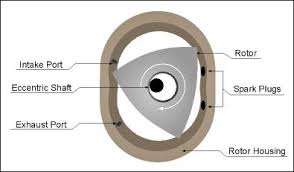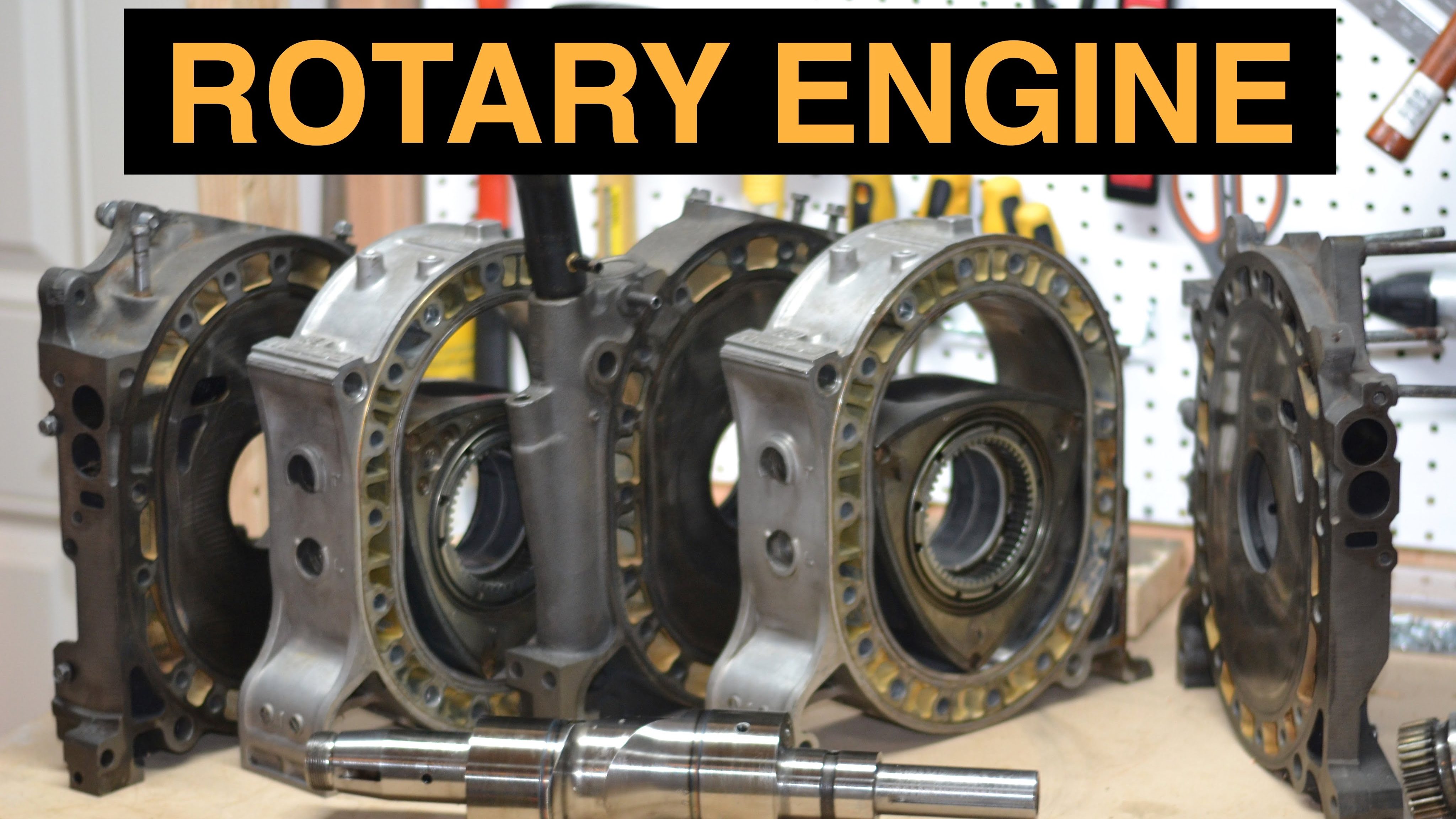If you think every engine is the typical orthodox piston engine, you are wrong. There is one type of engine which does not use pistons yet it is an internal combustion engine. It is the rotary engine or the Wankel engine. The most common rotary powered cars in Pakistan you might know are Mazda Rx7 and Mazda Rx8. Let us see how it works, why was it made and why has it died down.
Also Read: Otto vs Atkinson Cycle Engines: What is the difference and their applications
Rotary Engine:
Unlike the typical IC engines, a rotary engine does not use pistons. In a conventional engine, inside the same cylinder, the piston produces four operations – intake, compression, power, exhaust. However, in a Wankel engine, the four processes are not accomplished in the same volume rather all four happen in different parts; sort of like having different cylinders for each of the stroke. It basically converts pressure into rotary motion due to its intricate design.
Working:

A rotary engine consists of two major parts; a moving part called the rotor and a static part called housing. The rotor is a symmetric body that rotates in the housing. A central shaft called the E-shaft (eccentric shaft), which is analogous to the crankshaft of a normal engine, passes through the center of the housing and supports the rotor.
As the rotor rotates, each side of the rotor comes close to the wall of the housing and then moves away from it. Thus, it compresses or expands the volume between it; like the piston in a combustion chamber.

Intake – when the rotor revolves within the housing, a small air pocket is expanded into a large one which decreases the pressure. This when exposed to the intake port, ‘sucks in’ the air-fuel mixture into the combustion chamber.
Compression – while the air-fuel mixture is sucked in, the rotor continues to rotate, compressing the mixture against the wall of the housing.
Power – spark plugs ignite the mixture which allow the rotation of the rotor to continue while providing power through the E-shaft.
Exhaust – the exhaust gases at high pressure are then forced out when the rotor faces the exhaust ports.

It is important to note that in a Wankel engine, all three process occur simultaneously for one rotation of the rotor. This means that while air-fuel mixture is being sucked in, a power stroke is also being produced on the other side, generating very smooth power.
While a four stroke piston engine produces power on two rotations of the crankshaft, a rotary engine generates three power strokes per rotor revolution. Hence it produces a better power output.
Advantages:
A rotary engine displays a number of advantages, the biggest one being its weight-to-power ratio. Being very small in size, it generated tremendous amounts of power and hence was picked up by cars like the Mazda RX-7. Other benefits include:
- Fewer moving parts
- Smoother revving
- Almost vibrationless
- No engine knocking
- Cheaper to produce
- Wider speed range
- Higher octane rated fuel can be used
- Sump oil used is not consumed during combustion so requires little to no change

Disadvantages:
Although it has a lot of advantages, its use and production was cut down due to its not being able to follow European emission regulations. Mazda RX-8 being the last of cars having incorporated this innovative design. Its other disadvantages include:
- Low thermal efficiency due to fuel not being able to be burnt completely
- Rotary sealing since the housing is faced with different temperatures. On one side it is low while on the other side it is high due to combustion. Hence producing a metal to metal sealing which are operating at different temperatures is an arduous task. This problem can be diminished using cooling jackets but cannot be completely eradicated.
- Slow combustion
- Bad fuel economy
Conclusion:
All in all, a rotary engine is truly an ingenious design with numerous benefits. But due to its emissions and a few other problems, it was never really out into much use.

